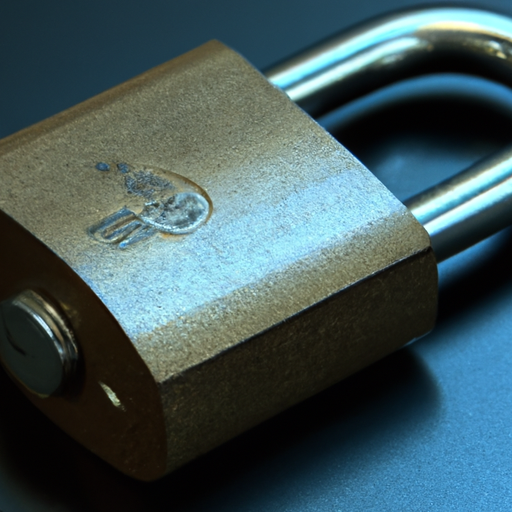How Do We Handle Potential Intellectual Property Theft During A Cyber Incident?
In a world where technology is constantly advancing, the threat of cyber incidents and intellectual property theft is a growing concern for businesses everywhere. In this article, we will explore the ways in which you can effectively handle potential intellectual property theft during a cyber incident. By understanding the importance of protecting your valuable creations and implementing the right security measures, you can safeguard your intellectual property and mitigate the risks associated with cyberattacks. So, let’s delve into the world of cyber incidents and discover the best strategies to safeguard your intellectual property.
Investigating the Cyber Incident
Determining if Intellectual Property Theft Has Occurred
When faced with a cyber incident, one of the first steps is to determine if intellectual property theft has taken place. This involves conducting a thorough investigation to gather evidence and identify any signs of unauthorized access or data exfiltration. It is crucial to have a team of skilled cybersecurity professionals who can analyze the situation and evaluate potential indicators of theft. This investigation may involve examining network logs, system activity, and other digital evidence to determine if confidential information or intellectual property has been compromised.
Evaluating the Scope and Impact of the Theft
Once it has been established that intellectual property theft has occurred, the next step is to assess the scope and impact of the theft. This involves determining what specific types of intellectual property have been stolen, such as patents, trade secrets, or proprietary software. Additionally, it is important to evaluate the extent of the theft, including understanding how much data has been compromised and who may have been responsible. This evaluation helps in formulating an effective response strategy and understanding the potential consequences for the organization.
Preserving Evidence for Legal Actions
Preserving evidence is crucial for any potential legal actions that may arise from the cyber incident. It is important to document and collect all available evidence to support an investigation and future litigation if necessary. This evidence can include network logs, system snapshots, firewall records, and any other relevant digital artifacts. Preserving this evidence ensures that it remains intact and unaltered, providing a strong foundation for legal proceedings and helping to hold the responsible parties accountable.
Securing the Affected Systems
Taking Immediate Action to Prevent Further Loss
After discovering the intellectual property theft, immediate action must be taken to prevent further loss or compromise. This involves responding swiftly to shut down any unauthorized access and mitigate the effects of the cyber incident. System administrators should implement incident response protocols that include isolating affected systems, disabling compromised accounts, and revoking unauthorized access privileges. By cutting off the attacker’s access, organizations can prevent additional theft and limit the damage caused by the incident.
Isolating Compromised Systems from the Network
A crucial step in securing the affected systems is isolating them from the network. By disconnecting compromised systems, the spread of the attack can be contained, preventing further damage to other parts of the organization’s infrastructure. Isolation allows for a focused investigation on the compromised systems without the risk of the attacker gaining further access to sensitive information or causing additional harm. It is important to have well-defined processes and protocols in place to ensure the isolation is carried out effectively and efficiently.
Implementing Strong Access Controls and Authentication Mechanisms
To enhance the security of the affected systems and prevent future unauthorized access, organizations should implement robust access controls and authentication mechanisms. This includes implementing multi-factor authentication, strong password policies, and regular access reviews. By enforcing strict access controls, organizations can significantly reduce the risk of unauthorized individuals gaining access to sensitive intellectual property. Additionally, it is essential to regularly update software and systems to address any known vulnerabilities that may have been exploited during the cyber incident.
Engaging Legal Experts
Consulting with Intellectual Property Lawyers
Engaging intellectual property lawyers is crucial when handling potential intellectual property theft during a cyber incident. These legal experts specialize in protecting intellectual property rights and navigating the complex legal landscape surrounding cyber incidents. By seeking their counsel, organizations can gain a better understanding of their legal rights, potential liabilities, and available courses of action. Intellectual property lawyers can provide guidance on how to protect intellectual property, draft appropriate legal agreements, and ensure compliance with relevant laws and regulations.
Understanding the Legal Implications of the Theft
A thorough understanding of the legal implications of the theft is vital in dealing with a cyber incident involving intellectual property. Intellectual property theft can have severe legal consequences for both the victim organization and the responsible parties. It is essential to understand the applicable laws and regulations governing intellectual property, data breaches, and cybercrime. By working closely with legal experts, organizations can ensure they are taking the necessary steps to protect their rights, preserve evidence, and pursue legal action, if appropriate.
Ensuring Compliance with Relevant Laws and Regulations
In the aftermath of a cyber incident, it is crucial to ensure compliance with relevant laws and regulations. Organizations must understand their obligations regarding reporting the incident to regulatory authorities, such as data protection authorities or industry-specific regulators. Compliance with notification requirements can help protect the organization’s reputation and demonstrate a commitment to accountability and transparency. It is important to work closely with legal counsel to navigate the complex landscape of legal compliance and avoid potential penalties or legal ramifications.
Notifying the Appropriate Authorities
Reporting the Cyber Incident to Law Enforcement Agencies
When intellectual property theft occurs during a cyber incident, it is important to report the incident to law enforcement agencies. This helps initiate the official investigation process and provides law enforcement with the necessary information and evidence to pursue legal action against the responsible parties. By promptly reporting the incident, organizations contribute to the collective effort in combating cybercrime and help prevent future attacks. It is essential to work closely with legal counsel to guide this reporting process and ensure compliance with any reporting requirements.
Providing Necessary Information and Evidence
When reporting a cyber incident to law enforcement agencies, it is crucial to provide all necessary information and evidence. This includes details about the nature of the incident, the types of intellectual property stolen, and any relevant technical information that can assist the investigation. Organizations should also share any evidence they have collected during their internal investigation, such as network logs, system snapshots, or any other digital artifacts that may aid the authorities in identifying the attacker and building a case against them. Cooperation and transparency with law enforcement officials can significantly strengthen the investigation process.
Cooperating with the Investigation Process
Cooperating fully with the investigation process is essential when intellectual property theft occurs during a cyber incident. This includes providing ongoing support to law enforcement agencies throughout their investigation. Organizations should be prepared to answer questions, provide additional evidence if necessary, and assist with any other requests from the investigating authorities. By actively cooperating, organizations demonstrate their commitment to resolving the case and increase the chances of bringing the responsible parties to justice.
Informing Affected Stakeholders
Notifying Internal Stakeholders (Employees, Management, Board)
When faced with a cyber incident involving intellectual property theft, it is crucial to notify internal stakeholders promptly. This includes informing employees, management, and the board of directors about the incident, its impact, and the steps being taken to address it. By maintaining open and transparent communication, organizations can provide reassurance to their stakeholders and demonstrate their commitment to protecting the organization’s intellectual property and sensitive information. Clear communication also helps ensure everyone is aware of the incident and can take necessary precautions to mitigate any potential consequences.
Communicating the Breach to External Stakeholders (Clients, Partners, Investors)
In addition to internal stakeholders, it is important to communicate the breach to external stakeholders, such as clients, partners, and investors. Timely and transparent communication helps manage expectations and maintain trust in the organization’s ability to effectively handle the situation. Organizations should provide accurate and concise information about the cyber incident, emphasizing the steps being taken to address the issue, protect intellectual property, and prevent future incidents. By keeping external stakeholders informed, organizations can minimize the potential reputational damage caused by the incident.
Developing a Communication Plan to Minimize Reputational Damage
Developing a comprehensive communication plan is crucial when dealing with a cyber incident involving intellectual property theft. The plan should outline the key messages to be communicated, the target audience for each message, and the appropriate channels and timing for communication. By carefully planning and structuring the communication efforts, organizations can ensure a consistent and coordinated response that minimizes reputational damage. It is important to work closely with public relations professionals and legal counsel to develop an effective communication strategy that aligns with the organization’s goals and priorities.
Conducting Digital Forensics
Gathering Digital Evidence for Investigation Purposes
Digital forensics plays a significant role in investigating a cyber incident involving intellectual property theft. It involves gathering digital evidence that can be used to understand the details of the incident, identify the attacker, and build a strong case if legal action is pursued. Digital investigators utilize specialized tools and techniques to collect and analyze data from various sources, such as network logs, system backups, and memory dumps. By carefully collecting and analyzing digital evidence, organizations can gain valuable insights into the attack vector, the modus operandi of the attacker, and the potential vulnerabilities in their systems.
Analyzing Network Logs and System Activity
Network logs and system activity provide crucial information during the investigation of a cyber incident. Digital forensic analysts analyze these logs to identify suspicious activities, unauthorized access attempts, or data exfiltration patterns. By carefully examining the network logs and system activity, organizations can gain insights into the timeline of the attack, the entry points utilized by the attacker, and the extent of the breach. This analysis helps improve the organization’s security posture by identifying areas of weakness and implementing appropriate measures to prevent future incidents.
Identifying the Attack Vector and Modus Operandi
A key objective of digital forensics is to identify the attack vector and modus operandi utilized by the attacker. By understanding how the intellectual property theft occurred, organizations can strengthen their security defenses and implement measures to prevent similar incidents in the future. Digital investigators analyze the collected evidence to identify the techniques, tools, and tactics employed by the attacker. This helps organizations adapt their cybersecurity measures to stay ahead of evolving threats and develop mitigation strategies specific to the identified attack vector.
Recovering and Restoring the Stolen Intellectual Property
Engaging Cybersecurity Firms for Recovery Support
Engaging cybersecurity firms with expertise in data recovery is crucial when attempting to recover stolen intellectual property. These firms specialize in forensic data recovery techniques and have the necessary skills and tools to attempt recovering lost or stolen data. By collaborating with these experts, organizations can maximize their chances of recovering the stolen intellectual property and minimizing the potential impact on their operations. Data recovery efforts may involve utilizing specialized software, reverse engineering techniques, or reconstructing partially or fully deleted files.
Implementing Data Recovery Techniques
To enhance the success of data recovery efforts, organizations should implement proven data recovery techniques. This includes developing a comprehensive plan for recovering the stolen intellectual property, identifying the most appropriate recovery methods for the specific types of data involved, and utilizing expert guidance from cybersecurity firms. It is important to carefully document the recovery process and any actions taken to ensure the integrity and admissibility of recovered data as potential evidence in legal proceedings. Through diligent data recovery efforts, organizations can retrieve valuable intellectual property that they may have thought was permanently lost.
Assessing the Completeness and Integrity of Recovered Data
Once the stolen intellectual property has been recovered, it is critical to assess the completeness and integrity of the data. Organizations should carefully examine the recovered data to ensure that it has not been tampered with or modified during the incident. This assessment can be performed by comparing the recovered data with trusted backups, file hashes, or other forms of digital verification. Validating the completeness and integrity of the recovered data increases confidence in its accuracy and reliability, allowing organizations to resume their operations with a higher degree of assurance.
Enhancing Cybersecurity Measures
Conducting a Comprehensive Security Audit
In response to a cyber incident involving intellectual property theft, organizations should conduct a comprehensive security audit. This involves thoroughly reviewing current cybersecurity measures, policies, and procedures to identify any weaknesses or gaps that may have contributed to the incident. By conducting a comprehensive security audit, organizations can gain insights into potential vulnerabilities and make informed decisions on necessary enhancements to prevent future incidents. This audit should cover areas such as network security, access controls, employee training, incident response protocols, and third-party vendor assessments.
Implementing Advanced Threat Detection Systems
To strengthen their defenses against future cyber incidents, organizations should implement advanced threat detection systems. These systems utilize cutting-edge technologies such as artificial intelligence and machine learning algorithms to analyze network and system activity for indicators of compromise. By detecting suspicious patterns or anomalies in real-time, these systems can alert security personnel to potential threats before they can cause significant damage. Implementing advanced threat detection systems provides organizations with an added layer of protection against intellectual property theft and other cyber threats.
Training Employees on Best Cybersecurity Practices
Employees play a vital role in maintaining an organization’s cybersecurity posture. It is crucial to provide comprehensive training to employees on best cybersecurity practices and establish a strong culture of security awareness. Training programs should cover topics such as password hygiene, email phishing awareness, secure remote access, and social engineering tactics. By equipping employees with the necessary knowledge and skills, organizations can create a first line of defense against intellectual property theft and other cyber threats. Regular refresher training sessions should be conducted to keep employees updated on emerging threats and new security measures.
Filing Civil Litigation
Suing the Responsible Parties for Damages
When intellectual property theft occurs, organizations have the option to file civil litigation against the responsible parties to seek damages. This legal action serves as a means to hold the attackers accountable for their actions and mitigate the losses incurred due to the theft. Organizations can work with their legal counsel to gather the necessary evidence, build a strong case, and seek fair compensation for the damages suffered. Filing civil litigation not only aims to recover financial losses but also sends a strong message that intellectual property theft will not be tolerated.
Pursuing Legal Action to Seek Compensation
By pursuing legal action, organizations aim to seek compensation for the damages caused by the intellectual property theft. This can include financial losses resulting from the theft itself, as well as potential reputational damage or loss of competitive advantage. Organizations may also seek injunctive relief, such as court orders to prevent further use or dissemination of the stolen intellectual property. Pursuing legal action not only serves the interests of the organization but also helps establish precedents that discourage future intellectual property theft and better protect innovation and creativity.
Utilizing Evidence Gathered During the Investigation
The evidence gathered during the investigation plays a crucial role in civil litigation. By utilizing the evidence collected, such as network logs, system snapshots, and other digital artifacts, organizations can present a strong case against the responsible parties. This evidence helps establish the facts and demonstrate the link between the intellectual property theft and the actions of the attackers. It is important to work closely with legal experts to ensure the admissibility and relevance of the evidence in court and maximize the chances of a favorable outcome.
Collaborating with Industry Partners
Sharing Information About the Incident
Collaborating with industry partners plays a significant role in combating cyber threats and preventing future incidents. When faced with intellectual property theft during a cyber incident, organizations should actively share information about the incident with trusted industry partners. This sharing of information helps in raising awareness, promoting joint defense efforts, and alerting other organizations about potential threats. By sharing details about the incident, organizations contribute to a culture of collaboration and develop a stronger collective defense against cyber threats.
Learning from Similar Experiences and Best Practices
Collaboration with industry partners provides an opportunity to learn from similar experiences and best practices. Organizations can gain valuable insights by engaging in discussions, attending industry conferences or webinars, and participating in forums or working groups focusing on cybersecurity and intellectual property protection. By learning from the experiences of others, organizations can better understand emerging threats, industry trends, and effective security practices. This information helps improve their own cybersecurity posture and enables them to implement measures that have been proven successful in similar contexts.
Building a Stronger Collective Defense Against Cyber Threats
Collaboration and information sharing with industry partners contribute to the development of a stronger collective defense against cyber threats. By working together, sharing knowledge, and pooling resources, organizations can establish a robust network that can effectively prevent, detect, and respond to intellectual property theft and other cyber incidents. This collaborative approach strengthens the overall cybersecurity ecosystem, making it more challenging for attackers to succeed and providing a safer environment for innovation, creativity, and the protection of intellectual property.








